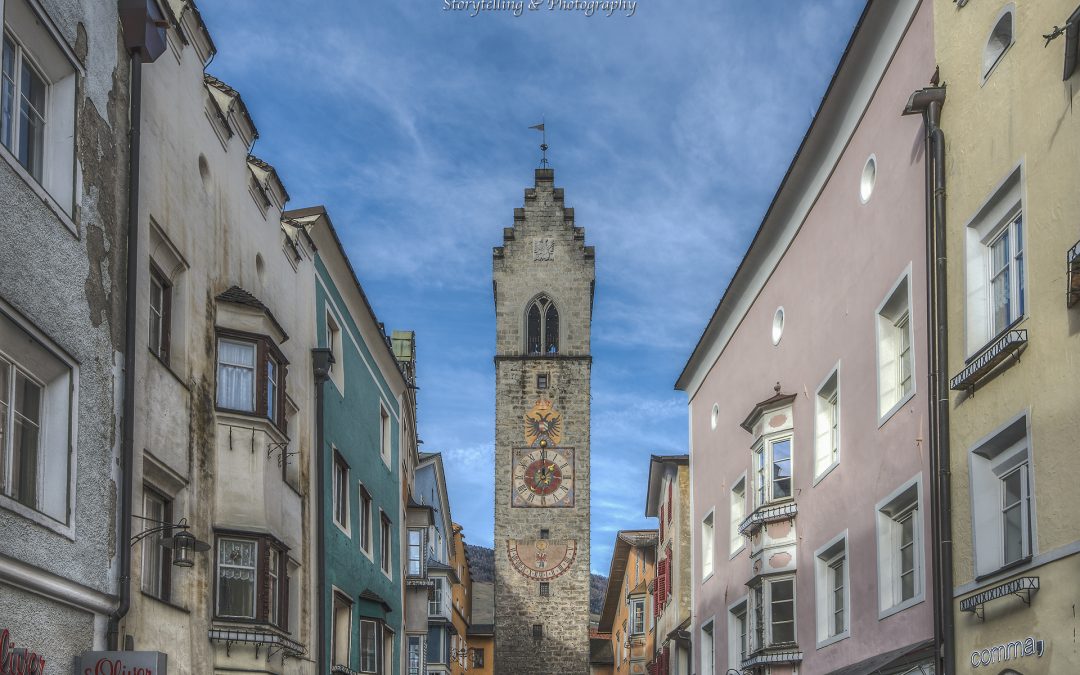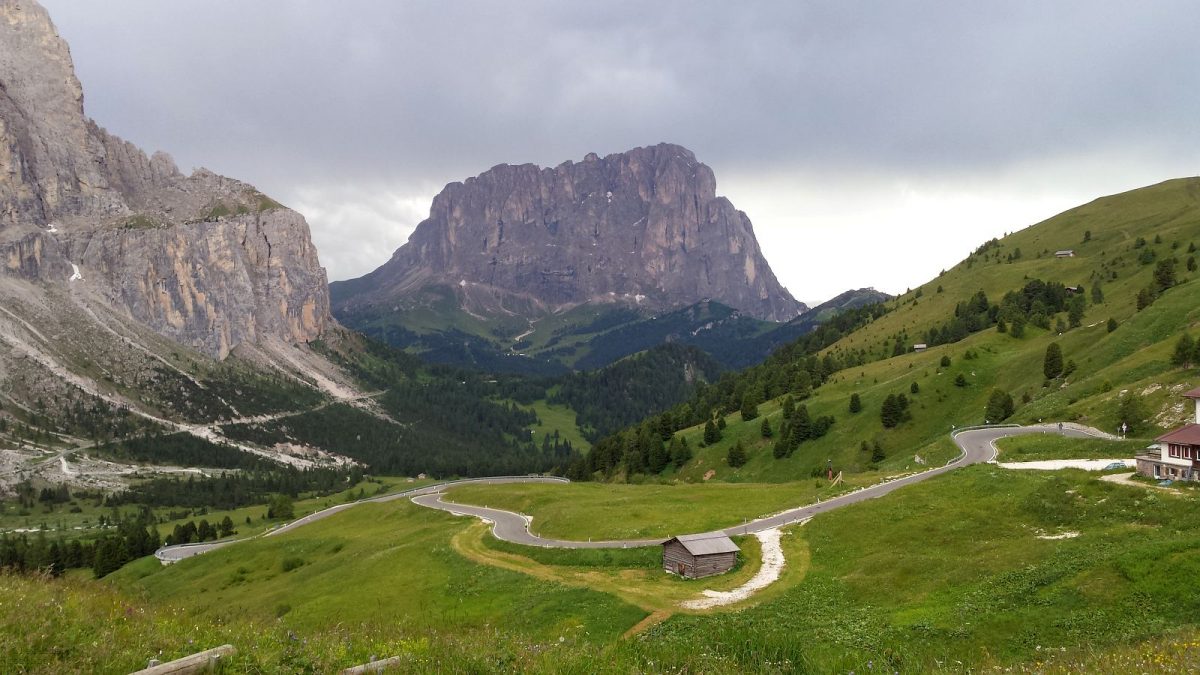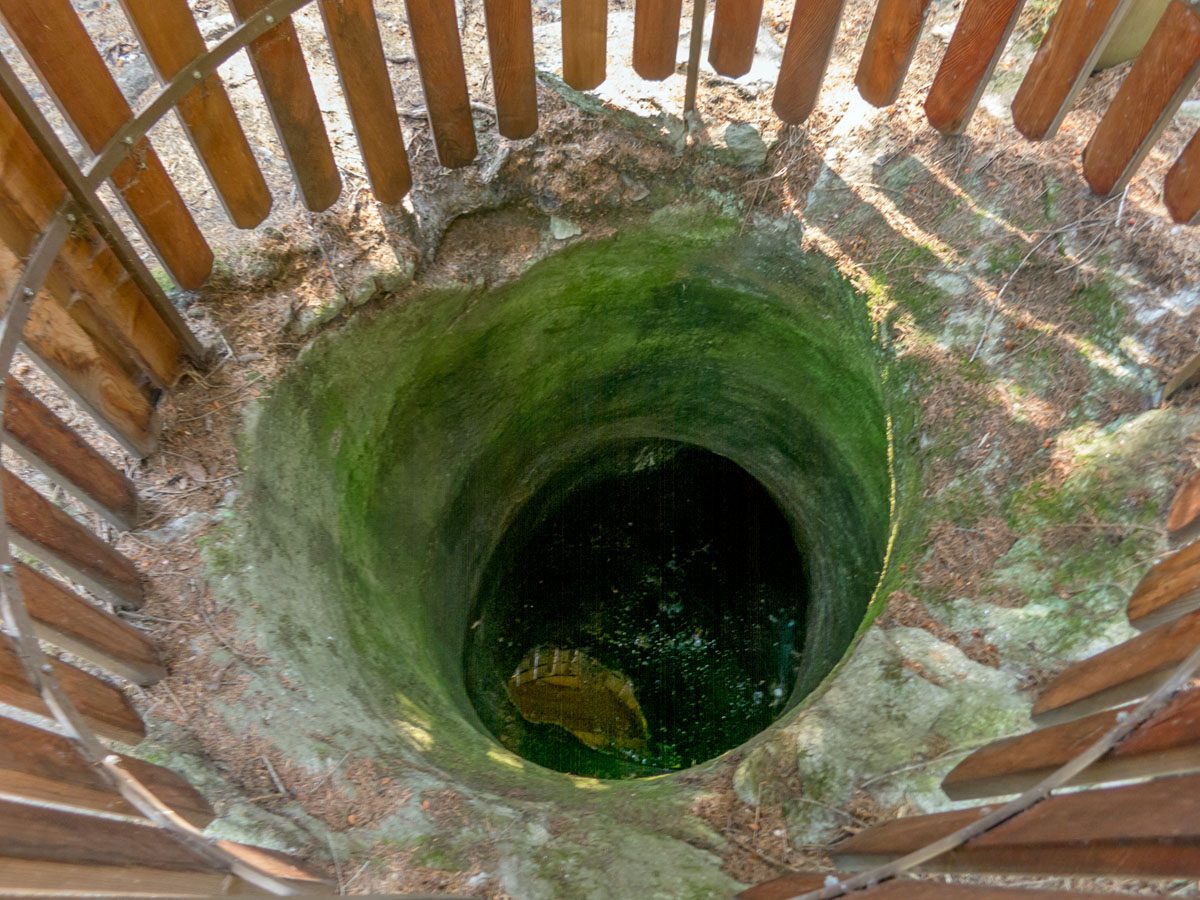How to reach the Zwölferturm
The Tower of the Twelve in Vipiteno, the landmark of the Fugger town, is located at the end of the medieval old town.
One of the sights of Vipiteno (Sterzing) – besides the churches, museums and the Vipiteno City Hall with the Stone of Mithras – is the Tower of the Twelve, which separates the old town from the new town. It is called “Zwölferturm” in Geman and “Torre delle Dodici” in Italian. The tower is not only the landmark of Vipiteno, but with its 46 metres also its highest building.
Its name probably derives from the fact that its bell rings at noon and has always called the citizens to lunch. The Tower of the Twelve was built between 1468 and 1472 above the town passage and was thus used a the upper town gate. This was at a time when the nearby silver mine in the Val Ridanna valley led the region to prosperity and Vipiteno experienced its boom as a Fugger town. Two marble slabs above the archway still remind of the laying of the foundation stone by Sigismund, Archduke of Austria, in 1469.
In 1867, the Gothic pointed roof burned down and was replaced by a stepped gable. Temporarily, the tower served as the seat of the fire brigade, who had a good view on the entire town from there. Today the Tower of the Twelve can be visited on some special dates. During the Advent and Christmas season, the small wooden huts of the Vipiteno Christmas Market are placed around it. And how to reach the tower? It is located between the old town and the new town of Vipiteno, various parking facilities are nearby, e.g. the Centrum or the Piazza Europa car parks.
Opening hours: from the end of November 2019 to the beginning of January 2020
visits are possible during the Vipiteno Christmas MarketKontakt:
Zwölferturm
Neustadt 1
39049 Sterzing
+39 0472-765325









